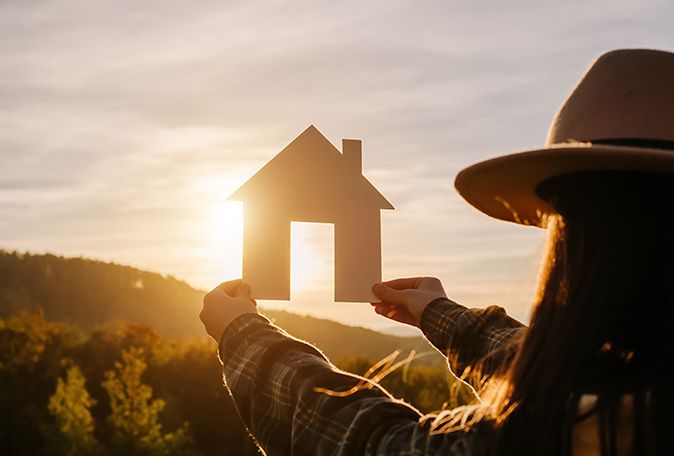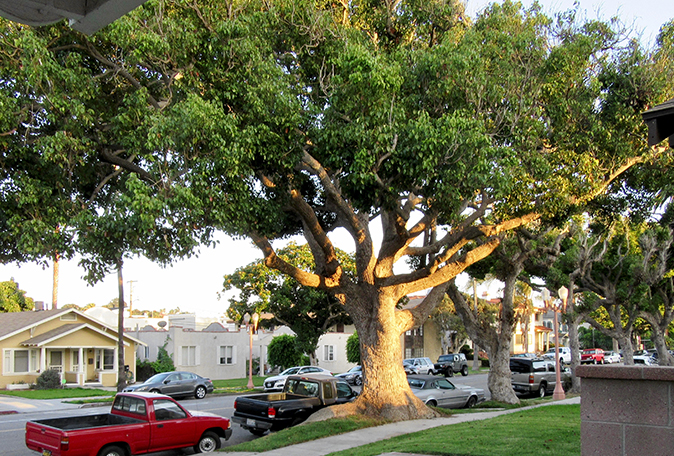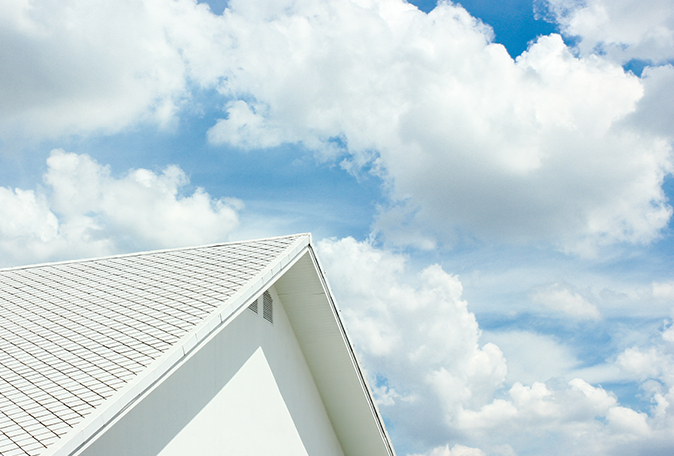Proper site selection can reduce home energy use by 25%, enhancing sustainability, savings, and comfort.
Choosing the right property site is the first crucial step in sustainable home building. It’s not just about a beautiful view or proximity to amenities, but an opportunity to reduce your carbon footprint and increase resilience. A strategically selected location harnesses natural advantages, such as sunlight for passive solar heating and breezes for natural cooling, reducing energy demands by up to 25%. Building on a brownfield site can also rehabilitate degraded land, thereby contributing to environmental restoration. Smart site selection can minimize disruption to local ecosystems and decrease commuting distances, further curbing greenhouse gas emissions. In the face of climate change, properties in safer locations with fewer risks from extreme weather events offer long-term security. So, think beyond the conventional. Make a choice that’s not just great for you, but for your wallet, the community, and the planet too. Your site selection can pave the way for a sustainable future.

Actions
- Choose a location close to alternative transportation
- Choose a walkable location
- Find or build a home on a bright/sunny lot
- Landscape to attract pollinators
- Live in an urban setting
- Manage stormwater on your site
- Protect trees, especially those that don’t interfere with solar access
- Use reflective colors & materials for roof and paving
Key Concepts:
1Location Efficiency
Location efficiency is the cornerstone of sustainable home development. This refers to the property’s proximity to work, shopping, schools, and public transportation. An efficiently located property can significantly reduce a household’s carbon emissions by limiting the need for car travel, which is one of the largest sources of greenhouse gas emissions. This can lead to savings in both time and fuel costs, while promoting healthier lifestyles through walking or biking. This is all about living in an area with easy access to everyday needs, reducing reliance on personal vehicles. Fewer car trips mean less carbon emissions and air pollution, and more opportunities for active transportation, which promotes physical health.
Fact: Living in a location-efficient neighborhood can reduce a household’s carbon emissions by as much as 50% compared to a car-dependent area
2Climate Sensitivity
Different parts of the U.S. have distinct climates, influencing the requirements for home heating, cooling, and insulation. Choosing a property site with a climate conducive to energy efficiency can result in significant savings and a smaller carbon footprint. For example, a south-facing slope in a colder region can provide passive solar heating. Climate plays a significant role in home energy needs. Recognizing this allows you to align your home design with the local climate, using nature’s rhythms to enhance comfort and reduce energy consumption.
Fact: In the U.S., heating and cooling account for nearly half of home energy use, emphasizing the need for climate-sensitive design.*

- “The Sustainable Sites Handbook: A Complete Guide to the Principles, Strategies, and Best Practices for Sustainable Landscapes” by Meg Calkins.
3Solar Orientation
A property’s orientation can have a significant impact on its energy consumption. A south-facing home can take advantage of passive solar design, reducing the need for artificial heating and lighting. Similarly, east and west orientations can be used to optimize natural light and minimize heat gain. How your home faces the sun impacts natural lighting, heating, and cooling. Optimal orientation can reduce energy costs and increase your home’s livability.
Fact: A well-oriented home can reduce energy consumption for heating, cooling, and lighting by up to 40%.
4Land Topography
The topography of a site impacts the home’s design and construction costs. Flat sites are generally cheaper to build on but don’t offer the same opportunities for passive solar heating as a south-facing slope. Additionally, the shape and layout of the land influence water drainage and potential for landscaping. The shape and elevation of land influence building cost, design, drainage, and landscaping. Understanding topography can help you design a home that’s harmonious with its surroundings.
Fact: Erosion from construction is 200 times greater per unit area than from farming, underscoring the importance of thoughtful site selection and planning.

5Access to Green Spaces
Proximity to parks, forests, and other natural spaces not only enhances wellbeing but can also reduce cooling needs in summer due to the ‘urban heat island’ effect. Moreover, such sites encourage physical activity and connectivity with nature, which are key for mental and physical health. Living close to nature boosts mental and physical wellbeing, reduces heat stress, and fosters a connection with the environment.
Fact: Urban green spaces can reduce city temperatures by up to 10 degrees Fahrenheit, offering respite from the heat and reducing cooling costs
- “The Sustainable Sites Handbook: A Complete Guide to the Principles, Strategies, and Best Practices for Sustainable Landscapes” by Meg Calkins.
6Existing Infrastructure
Building on a ‘brownfield’ site, or a previously developed site, can make use of existing infrastructure, such as roads, utilities, and even foundations. This reduces the environmental impact of the home’s construction and can often be more cost-effective than building on a ‘greenfield’, or undeveloped site. Reusing sites with existing infrastructure limits environmental impact, reduces costs, and can revitalize neighborhoods.
Fact: Building on a brownfield site can reduce the environmental footprint of a home by 40-50%, compared to building on an undeveloped site.

7Community Impact and Engagement
A sustainable home should contribute positively to its community. This could involve using local, sustainable materials, employing local workers, or designing the home in a way that complements the local architecture and culture. Community engagement also includes considering the home’s impact on local resources, such as water and energy supplies. Sustainable homes should contribute to their community culturally, economically, and environmentally. Engaging with the local community ensures a holistic approach to sustainability.
Fact: Local sourcing of construction materials can reduce CO2 emissions by up to 30%.
- “The Sustainable Sites Handbook: A Complete Guide to the Principles, Strategies, and Best Practices for Sustainable Landscapes” by Meg Calkins.
8Resilience to Extreme Weather
The frequency and severity of extreme weather events are projected to increase due to climate change. Therefore, it’s important to choose a site that’s resilient to these risks. This could mean avoiding floodplains, opting for sites with good drainage, or choosing locations that are less prone to wildfires. Building in areas resilient to climate risks protects your investment and helps future-proof your home.
Fact: Every $1 spent on disaster resilience saves society $6 in future disaster costs.

- “The Sustainable Sites Handbook: A Complete Guide to the Principles, Strategies, and Best Practices for Sustainable Landscapes” by Meg Calkins.
9Biodiversity Considerations
Choosing a site that preserves local biodiversity can have significant environmental benefits. This can involve avoiding important habitats, planning construction to limit damage to local flora and fauna, and incorporating native species into the home’s landscaping. Preserving and enhancing local biodiversity contributes to the health of the planet and enriches our connection to nature.
Fact: Native plants can use up to 83% less water and require 56% less maintenance than non-native plants
- “The Sustainable Sites Handbook: A Complete Guide to the Principles, Strategies, and Best Practices for Sustainable Landscapes” by Meg Calkins.
10Future Resale Value
While not directly linked to sustainability, the future resale value of a property is an important consideration. Factors such as location efficiency, resilience to climate risks, and access to green spaces can all increase a home’s value over time. A home’s sustainable features and location efficiency can increase its future resale value, making sustainability an investment in your financial future.
Fact: Green homes can command a premium of up to 30% on the real estate market.*

Understanding and considering these key concepts can help you make an informed, sustainable, and beneficial choice for your future home. Selecting a site isn’t just about finding a beautiful place to live; it’s about building a home that is in harmony with the environment, supports your wellbeing, and contributes to a more sustainable future. With careful planning and thoughtful design, your home can be a part of the solution to the environmental challenges we face. The choices you make today will resonate far beyond your front door, shaping the health, happiness, and resilience of your community for generations to come.
Special Considerations for Affordable Housing Projects:
1Land Cost & Availability
Given the central role of cost in affordable housing, the availability of inexpensive or subsidized land is paramount. Governments, nonprofits, and community land trusts can play crucial roles in making land accessible for such projects.
2Access to Amenities & Transportation
Locations with good access to public transit, employment centers, and essential amenities like grocery stores, schools, and healthcare facilities are ideal for affordable housing. Such access reduces living costs, promotes socio-economic integration, and enhances quality of life for residents.
3Community Support & Local Regulations
Affordable housing projects often face significant local opposition or restrictive zoning regulations. Finding locations where community support exists or can be cultivated, and where zoning and regulatory environments are favorable, is vital to the success of these projects.
4Building Conditions & Infrastructure
For redevelopment projects, the condition of existing structures and infrastructure is key. Sites with solid, salvageable buildings can lower construction costs. Similarly, sites with good existing infrastructure, like roads and utilities, reduce development costs.
5Environmental Risk Factors
Affordability should never compromise safety. It’s crucial to avoid sites prone to environmental risks like flooding, extreme heat, or air and noise pollution. The long-term livability and resilience of affordable housing is as important as its initial cost.
Balancing these considerations will guide the development of affordable housing projects that are not just economically viable, but also socially equitable and environmentally sustainable.








